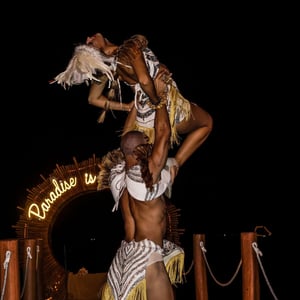3 places you saw in Quintana Roo without knowing that they are Cultural Heritage
Get to know the places that nobody knows that are part of the cultural heritage of Quintana Roo.
Book Top Experiences and Tours in Mexico:
If youʻre booking your trip to Mexico last minute, we have you covered. Below are some of the top tours and experiences!- Mexico City: Frida Kahlo Museum Ticket with Digital Guide
- Mexico City: Double Decker Bus Night Tour
- Mexico City: Private Magic Towns & Basaltic Prisms Tour
- Mexico City: Cacahuamilpa Caves and Taxco Small-Group Tour
- Chautla's Castle, Lavender Farm, and Valquirico Private Tour
For this reason, uses and customs are maintained in terms of indigenous legislation, with partial recognition by Western authorities. It is undoubtedly an icon of the social organization of the Mayan culture. The ceremonial center is a recipient of the traditions and customs of the Mayan people of Quintana Roo.
Chapel from the 16th century, in the archaeological zone of Xcaret. The origin and meaning of the word Xcaret are unknown, but in pre-Hispanic and colonial times its name was P'olé, derived from the root p'ol, which implies merchandise, treatment and contract with merchants. P'ole was an important commercial port. Being in front of the island of Cozumel, it became the main port of embarkation to the island, where many pilgrims crossed by canoe to go to the famous sanctuary of the Goddess Ixchel, currently destroyed.
During the first years of the Colony it continued to be the port of departure and arrival of Cozumel, from this period the remains of a small 16th century church are preserved, which is part of one of the oldest testimonies of the Spanish presence in Mexico. If you still don't know it, don't worry there are tours that can take you and bring you easily.
Chapel from the 16th century, Oxtankah Archaeological Zone. Oxtankah is the name given in 1937 by the archaeologist Alberto Escalona, to an extensive pre-Hispanic settlement located north of the city of Chetumal. It received this name due to the large number of ramon (ox in Mayan) trees that surround the site, since the original name of the settlement is unknown.
In this pre-Hispanic city, the inhabitants, to supply themselves with fresh water, built wells and chultunes, where they collected rainwater. Navigation was a common activity, so they traveled the channels of the region in canoes and crossed the Bay of Chetumal to transit through the Caribbean Sea, interacting with other coastal populations and participating in long-distance exchange systems to obtain marine products. and foreign terrestrials who distributed and exchanged with other communities settled inland. When the Spanish arrived, Oxtankah had been abandoned for about 400 years.
















































